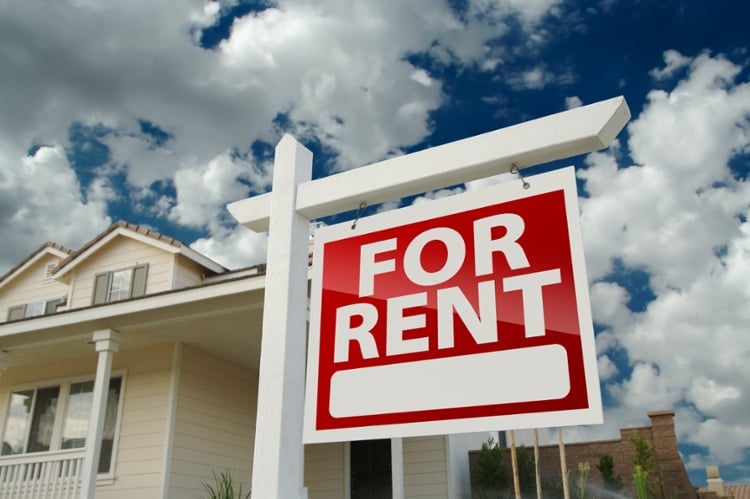Many business and investment assets such as rental property can be depreciated for tax purposes to reduce taxable income. However, when an investment is sold, the depreciation must be recaptured and then taxed.
In this article, we’ll discuss how depreciation and rental property depreciation recapture work, and how you can avoid paying tax when you sell an income-producing property.
What is rental property depreciation recapture?
Depreciation recapture occurs when a rental property is sold. Recapturing depreciation is the process the IRS uses to collect taxes on the gain you’ve made from your income property and to recover the benefits you received by using the depreciation expense to reduce your taxable income.
Understanding rental property depreciation
Before we discuss the recapture of depreciation for a rental property, let’s quickly review how and why depreciation occurs in the first place.
One of the biggest benefits of investing in real estate is that the IRS allows you to depreciate the property for each year of ownership, up to 27.5 years for residential rental property. The Internal Revenue Service assumes the property – but not the land - wears out or depreciates over time, and that depreciation expense is used to offset taxable net income.
Using depreciation to reduce NOI
For example, if you paid $120,000 for a rental property and the value of the lot is $20,000, you have a depreciation expense of about $3,636 per year:
- $100,000 property value (excluding the lot) / 27.5 years = $3,636 annual depreciation expense
You can then use the annual depreciation expense to reduce your taxable net income. If your NOI is $6,000 per year your taxable income is reduced to $2,364 thanks to the power of depreciation:
- $6,000 NOI - $3,636 depreciation expense = $2,364 taxable income
However, what the IRS gives they also take back when you sell the property by recapturing the depreciation.
How rental property depreciation recapture works
In addition to lowering your taxable income, depreciation also reduces or adjusts the cost basis of your property. After 10 years of ownership the property adjusted cost basis is:
- $100,000 original cost basis - $36,360 depreciation ($3,636 x 10 years) = $63,640 adjusted cost basis
Thanks to your great local property manager the rental property has generated consistently strong cash flow from qualified tenants. Another investor offers to buy your property for $240,000 – double what you paid for it 10 years ago.
When you sell, the IRS recaptures your depreciation by requiring you to use your adjusted costs basis for calculating your gain on sale instead of your original purchase price:
- $240,000 property sales price - $63,640 adjusted cost basis = $176,360 recognized gain
If your total income is $225,000 per year, your ordinary tax rate is 24% and your long-term capital gains tax rate is 15% (based on the 2020 tax tables for married filing jointly). It would be nice to have your total recognized gain of $176,360 taxed at the lower capital gains tax rate.
But, the IRS isn’t that nice. Instead, you’ll be taxed at your higher ordinary tax rate of 24% for the depreciation deductions you’ve taken of the past 10 years, with the rest of your gain taxed at the lower capital gains tax rate:
- Total recognized gain = $176,360
- Depreciation expense = $36,360 x 24% ordinary tax rate = $8,726 tax based on income bracket
- Remaining gain = $176,360 – $36,360 depreciation expense = $140,000 x 15% = $21,000 tax based on capital gains
- Total tax owed = $8,726 ordinary income tax + $21,000 capital gain tax = $29,726 total tax
What happens if your gain is less than the depreciation expense?
If your total recognized gain is less than your depreciation expense, the IRS requires you to use your ordinary rate when calculating the tax owed.
For example, let’s say the real estate market is in a normal downward cycle. Even though it’s a buyer’s market, for personal or business reasons you decide to sell to a buyer who offers to pay $105,000. Because your gain is less than your total depreciation tax deductions over the 10 years you’ve owned the property, your tax is based on your ordinary tax rate:
- $99,000 property sales price - $63,640 adjusted cost basis = $35,360 total recognized gain
Because your depreciation expense of $36,360 is greater than your total recognized gain of $35,360, you’ll pay tax based on your ordinary tax rate:
- Total tax owed = $35,360 recognized gain x 24% ordinary tax rate = $8,486
Does depreciation recapture apply for property sold at a loss?
If you sell your rental property for a loss, the rules for recapturing depreciation don’t apply. However, keep in mind that even if you lose money on the sale you’ve still benefited by being able to use the depreciation deduction of $36,360 over the past 10 years to reduce your taxable income.
The IRS also allows you to carry back the loss from a rental property by amending your previous tax returns. You can also carry forward the loss from your rental property investment to offset future income. Topic No. 425 Passive Activities – Losses and Credits and Publication 544 from the IRS explains in detail how losses work for rental real estate activities.

How partial year depreciation works
In the above examples, we’ve used a full year of depreciation, which is 3.363% of the property value each year. However, in the real world of real estate investing, deals take place every month of the year.
Partial year depreciation is calculated based on the month the rental property is put into service. Generally speaking, a rental property is put into service when it is ready and available to be rented, not when a tenant takes possession, according to IRS Publication 527.
That means that if your rental is available for occupancy on February 1st but a tenant doesn’t sign a lease and move in until April 1st, you can still start depreciation the first day of February. The IRS also determines exactly how partial year depreciation works, so that you don’t make a mistake:
- Full year = 3.636%
- January = 3.485%
- February = 3.182%
- March = 2.879%
- April = 2.576%
- May = 2.273%
- June = 1.970%
- July = 1.667%
- August = 1.364%
- September = 1.061%
- October = 0.758%
- November = 0.455%
- December = 0.152%
After your first partial year of service, rental property is depreciated 3.636% for each full year of service, and then partially depreciated again depending on which month of the year you sell.
Can you avoid claiming depreciation?
At this point, you may be wondering if you can avoid dealing with rental property depreciation recapture simply by not claiming depreciation in the first place. Unfortunately, the answer is no.
Internal Revenue Code Section 1250 states that depreciation must be recaptured if depreciation was allowed or allowable. So, even if you don’t claim the annual depreciation expense on rental property that you’re legally entitled to, you’ll still have to pay tax on the gain due to depreciation when you decide to sell.
That’s the bad news. The good news is that while you can’t avoid claiming depreciation, the IRS does allow you to defer paying capital gains tax.
How to defer paying capital gains tax
An IRC Section 1031 tax-deferred exchange is the process that allows real estate investors to defer the payment of capital gains taxes.
The process also goes by other names such as a “Starker exchange”, a “Tax-deferred exchange”, a “Like-kind exchange”, or even just a “1031.” Regardless of the term used, a 1031 exchange originates from Section 1031 of the U.S. Internal Revenue Code.
This section of the Internal Revenue Code allows investors to sell or relinquish an investment property, reinvest the proceeds in a replacement investment property of like kind and greater or equal value, and defer the payment of any capital gains tax.
There are seven simple rules to follow that allow you to defer all capital gains tax:
- Property must be like-kind real estate of the same nature or character but can differ in type, quality or grade (such as commercial property being replaced with a single-family rental property, a multifamily building, or raw land).
- Real estate must be used for investment or business only, not as personal property or not as a primary residence.
- Property must be of equal or greater value, including both the total sale price and replacement of an equal mortgage amount (if a mortgage exists), to avoid paying tax on boot.
- Boot occurs when the value of the replacement property is less than the value of the relinquished property.
- Title of the replacement property purchased must be in the same name as the relinquished property sold.
- Replacement property (or properties) must be identified within 45 days of closing on the sale of the relinquished property
- Purchase of the replacement property (or properties) must occur within 180 days of closing on the sale of the relinquished property
In addition to deferring the payment of capital gains tax on investment real estate, there are a number of other advantages to a 1031 exchange:
- Increase yields and total returns by selling an underperforming property and buying one with higher projected returns
- Diversify a real estate investment portfolio with long-distance real estate investing, by purchasing properties in different geographic locations
- Consolidate several smaller properties into one large property, or divide a single large property into several smaller ones, often for the purposes of estate planning
- Avoid the recapture of depreciation and the resulting increase in taxable income
Taxes and management made easy with Stessa
Navigating depreciation and recapture can be tricky, but staying on top of your property finances doesn’t have to be. Take your rental property management to the next level with the Stessa platform, which is trusted by over 250,000 landlords.
Stessa helps streamline the record-keeping process so you can stay organized, maximize your tax deductions, and make informed decisions.
You also get features that make the day-to-day management of your properties easier, including:
- Automated income and expense tracking: Instantly sort and classify transactions from linked bank, lender, credit card, and property management accounts, all without additional fees or required add-ons.
- Financial reporting: Generate income statements, net cash flow summaries, and balance sheets (available with the paid Pro plan), among other reports.
- Landlord banking: Open an FDIC-insured high-yield bank account for each property and easily integrate them with Stessa’s financial tracking features.
- Rental applications and tenant screening: Use Stessa’s tenant screening services and free rental applications to find and select qualified tenants.
- eSigning (in partnership with DocuSign): Upload your document, tag it for digital signatures, and send it to tenants, vendors, partners, and others.
- Free rent collection: Collect rent from tenants through one-time or recurring ACH payments.
- Real-time performance metrics: Get round-the-clock insights into the performance of your property portfolio.
- Property management integration: Link your property management data portal to Stessa to import transactions and get a detailed portfolio overview.
- Unlimited properties: Add an unlimited number of properties to your Stessa account.
- Collaborative access: Invite other investors, CPAs, spouses, and others to share your Stessa account. Manage their access levels to view and/or edit the account.
- Tax resources: Access the yearly Tax Guide and a suite of educational materials created in partnership with The Real Estate CPA to make tax season a breeze.
Experience a more efficient, stress-free way to manage your rental properties. Sign up for a free account with Stessa today.









